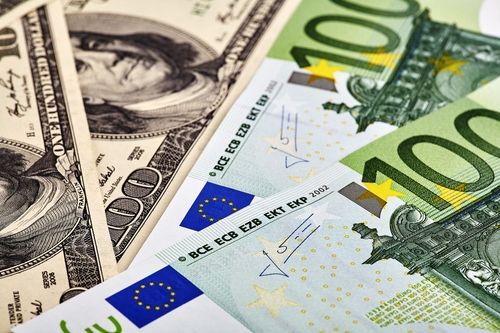
EUR/USD remains stable ahead of the Purchasing Managers Index data release from Eurozone and Germany.
The US Dollar may struggle due to the rising likelihood of more Fed rate cuts by the end of the year.
ECB President Lagarde emphasized that monetary policy needs to stay adaptable.
EUR/USD maintains its position around 1.1160 during the Asian hours on Monday. The US Dollar (USD) may depreciate following the rising likelihood of further interest rate cuts by the Federal Reserve (Fed) in 2024, which may underpin the EUR/USD pair.
The US Federal Reserve cut interest rates by a larger-than-usual 50 basis points to a 4.75-5.00% range last week. Policymakers also predicted an additional 75 basis points (bps) of rate cuts by the end of the year.
However, Federal Reserve Chair Jerome Powell stated in the post-meeting press conference that the Fed is not in a hurry to ease policy and emphasized that half-percentage point rate cuts are not the "new pace."
On Friday, Philadelphia Fed President Patrick Harker stated that the US central bank has effectively steered through a challenging economic landscape in recent years. Harker compared monetary policy to driving a bus, where it's essential to balance speed. He also emphasized that achieving maximum employment is more than just the number of jobs—it also includes the quality of those jobs.
On the EUR front, European Central Bank (ECB) President Christine Lagarde emphasized in her speech on Friday that monetary policy needs to stay adaptable in a constantly evolving world. Although the core objectives of monetary policy, particularly price stability, remain the same, central banks must maintain flexibility to respond to the challenges of a swiftly changing global economy, according to Euronews.
Traders are expected to closely monitor the Purchasing Managers Index (PMI) data from Eurozone and Germany set to be released later in the day. the monthly PMI serves as a leading indicator of business activity, providing insights into economic health and trends.
Euro FAQs
The Euro is the currency for the 20 European Union countries that belong to the Eurozone. It is the second most heavily traded currency in the world behind the US Dollar. In 2022, it accounted for 31% of all foreign exchange transactions, with an average daily turnover of over $2.2 trillion a day. EUR/USD is the most heavily traded currency pair in the world, accounting for an estimated 30% off all transactions, followed by EUR/JPY (4%), EUR/GBP (3%) and EUR/AUD (2%).
The European Central Bank (ECB) in Frankfurt, Germany, is the reserve bank for the Eurozone. The ECB sets interest rates and manages monetary policy. The ECB’s primary mandate is to maintain price stability, which means either controlling inflation or stimulating growth. Its primary tool is the raising or lowering of interest rates. Relatively high interest rates – or the expectation of higher rates – will usually benefit the Euro and vice versa. The ECB Governing Council makes monetary policy decisions at meetings held eight times a year. Decisions are made by heads of the Eurozone national banks and six permanent members, including the President of the ECB, Christine Lagarde.
Eurozone inflation data, measured by the Harmonized Index of Consumer Prices (HICP), is an important econometric for the Euro. If inflation rises more than expected, especially if above the ECB’s 2% target, it obliges the ECB to raise interest rates to bring it back under control. Relatively high interest rates compared to its counterparts will usually benefit the Euro, as it makes the region more attractive as a place for global investors to park their money.
Data releases gauge the health of the economy and can impact on the Euro. Indicators such as GDP, Manufacturing and Services PMIs, employment, and consumer sentiment surveys can all influence the direction of the single currency. A strong economy is good for the Euro. Not only does it attract more foreign investment but it may encourage the ECB to put up interest rates, which will directly strengthen the Euro. Otherwise, if economic data is weak, the Euro is likely to fall. Economic data for the four largest economies in the euro area (Germany, France, Italy and Spain) are especially significant, as they account for 75% of the Eurozone’s economy.
Another significant data release for the Euro is the Trade Balance. This indicator measures the difference between what a country earns from its exports and what it spends on imports over a given period. If a country produces highly sought after exports then its currency will gain in value purely from the extra demand created from foreign buyers seeking to purchase these goods. Therefore, a positive net Trade Balance strengthens a currency and vice versa for a negative balance.
* The content presented above, whether from a third party or not, is considered as general advice only. This article should not be construed as containing investment advice, investment recommendations, an offer of or solicitation for any transactions in financial instruments.



